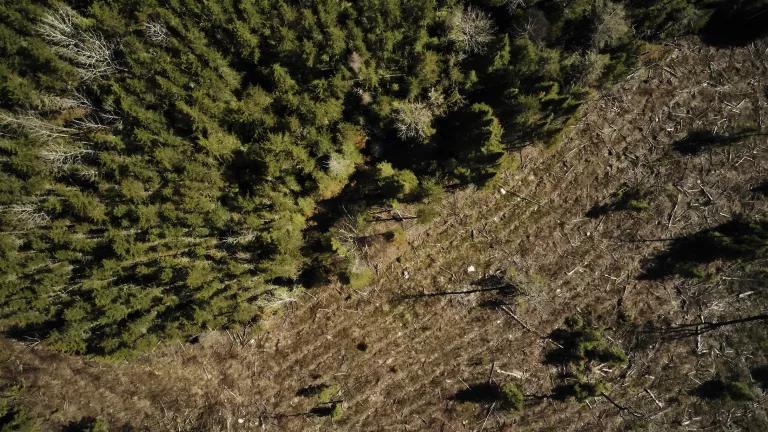Tomorrow I will testify before the U.S. House of Representative’s Energy and Power subcommittee on the impact of the Keystone XL pipeline on tar sands production and the climate emissions associated with it. Financial analysts, industry commentators, and the environmental community agree that Keystone XL is a lynchpin for tar sands expansion. However, in its draft environmental review of the project, the State Department suggested that rail would take Keystone XL’s place if the pipeline is rejected. Many of the pipeline’s proponents have jumped onto this idea, suggesting that even now, the controversy surrounding Keystone XL was causing tar sands to move by rail and barge instead. The two problems with this argument is 1) there is data showing how Canadian tar sands is getting into the United States and 2) Canadian tar sands not moving by rail. Records from the U.S. Energy Information Administration (EIA) show that in December 2012, no more than 21,000 bpd of heavy crude from Canada – including tar sands and conventional crude - processed by Gulf Coast refineries could have entered the United States by rail. That’s less than 1% at a time when prices for tar sands at the Gulf were up to $50 a barrel higher than they were in Alberta. Contrary to State’s conclusions, the Keystone XL pipeline is the linchpin for expanded tar sands production and the substantial climate emissions associated with it.
There is no question that producers of light conventional crude from North Dakota’s and southern Canada’s Bakken region have caused a rapid expansion of crude moving by rail in the United States. Unfortunately, many folks assume that the rail explosion in the Bakken oilfields is currently being replicated in northern Alberta’s tar sands. It’s not. And that fact in itself should give observers pause.
From 2009 to 2013, transport of oil by rail in North Dakota increased from a few thousand barrels a day to over half a million. In January 2013, over two thirds of light crude produced in North Dakota was transported to refineries by rail. As they turned to rail, domestic light oil producers have even rejected major pipeline proposals – including Oenok’s 200,000 barrel per day Bakken pipeline. When analysts talk about the upsurge of rail transport in the United States and southern Canada, this is what they’re referring to – an enormous expansion of light crude from the Bakken.
However, a similar expansion has not occurred in Alberta’s tar sands despite the need for additional transportation infrastructure. Data from the Energy Information Administration show that no more than 21,000 bpd of Canadian tar sands and conventional heavy crude – or less than 1% of production – entered the United States via rail on its way to refinery markets in the Gulf Coast by rail in December 2012.
The answer does not seem to be pricing discounts. From 2009 to 2012, producers of tar sands faced the same price discounts that Bakken producers did, if not greater ones. There are two major reasons why tar sands producers haven’t turned to rail to move their product to market. First, it is significantly more expensive for them to do so, and second, they have significantly tighter profit margins than Bakken producers.
Tar sands diluted bitumen is significantly more expensive to move by rail than Bakken light crude. There are a number of reasons for this:
- The tar sands are about 1,000 miles farther away from refinery markets than the Bakken oil fields.
- Trains moving light crude can carry nearly 30% more crude than trains moving heavy tar sands diluted bitumen.
- Moving tar sands requires specialized rail offloading terminals, onloading terminals and heated rail cars.
All of these factors increase the cost of moving a barrel of tar sands to Gulf Coast refineries. Shipping a barrel of tar sands diluted bitumen to the Gulf is currently costing tar sands producers $31 a barrel. Moving it by pipeline only costs $8 to $9.50 a barrel, according to the State Department’s most recent draft Supplemental Environmental Impact Statement.
It’s important to note, this isn’t the first time that State predicted that tar sands by rail was on the verge of rapid expansion - in 2011 the agency made the same claim in its environmental review of Keystone XL. State’s forecast proved inaccurate then and its 2013 forecast on the viability of rail continues to be substantively flawed. It’s telling that the State Department, and not industry, is the only party seriously interested in substantially expanding rail infrastructure designed for high volumes of Canadian tar sands. Rail simply does not provide an economically feasible alternative for the Keystone XL tar sands pipeline.
The substantial risks of the Keystone XL tar sands pipeline outweigh its marginal benefits. Keystone XL would enable a substantial expansion of tar sands expansion and substantial climate pollution associated with it. The pipeline would endanger critical jobs on ranches and farms in the Great Plains states in order to transport tar sands to the Gulf Coast where it can be refined and exported. In exchange for 35 permanent jobs, Keystone XL would pose a permanent risk to American communities, sensitive water resources, agricultural industry and climate.



